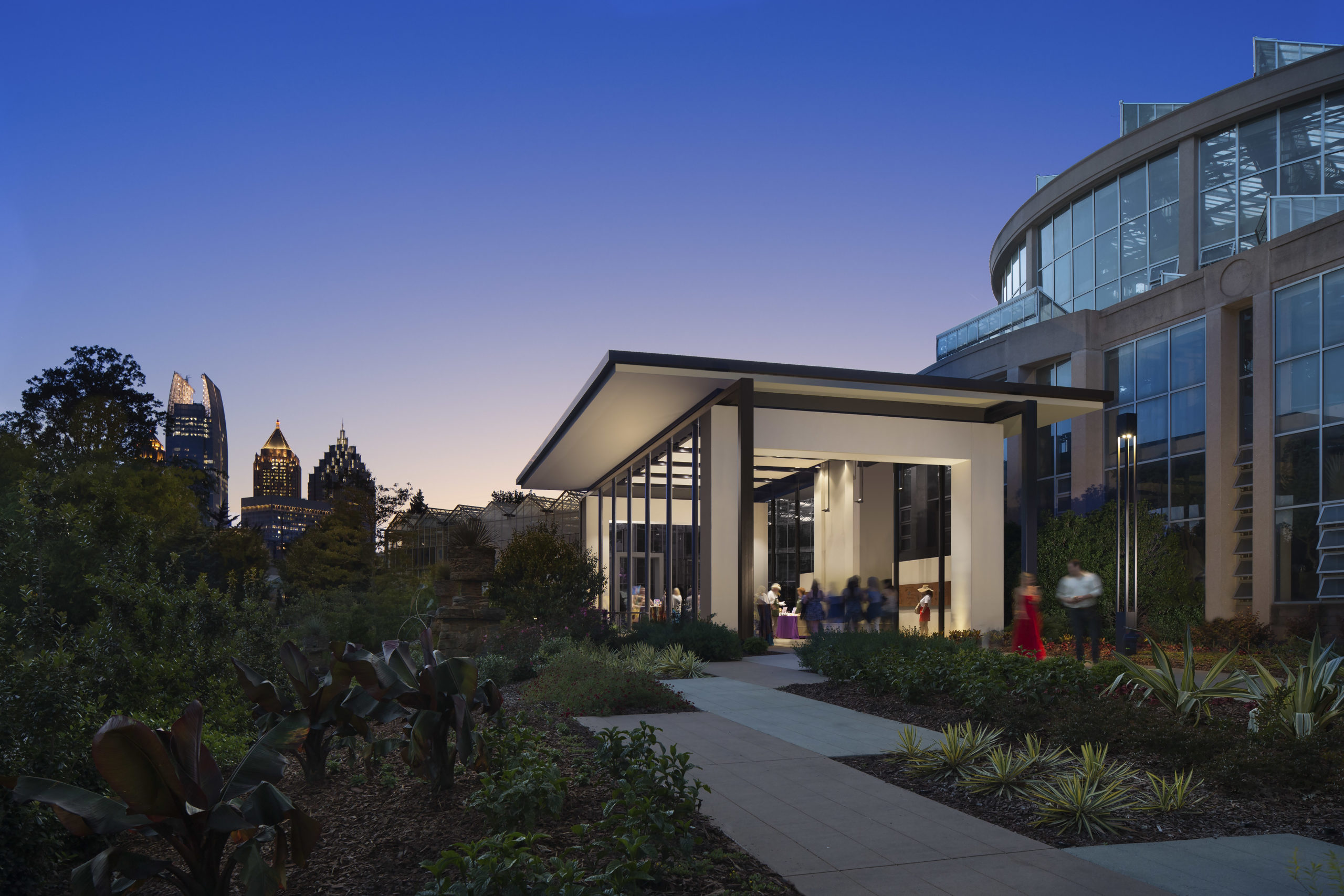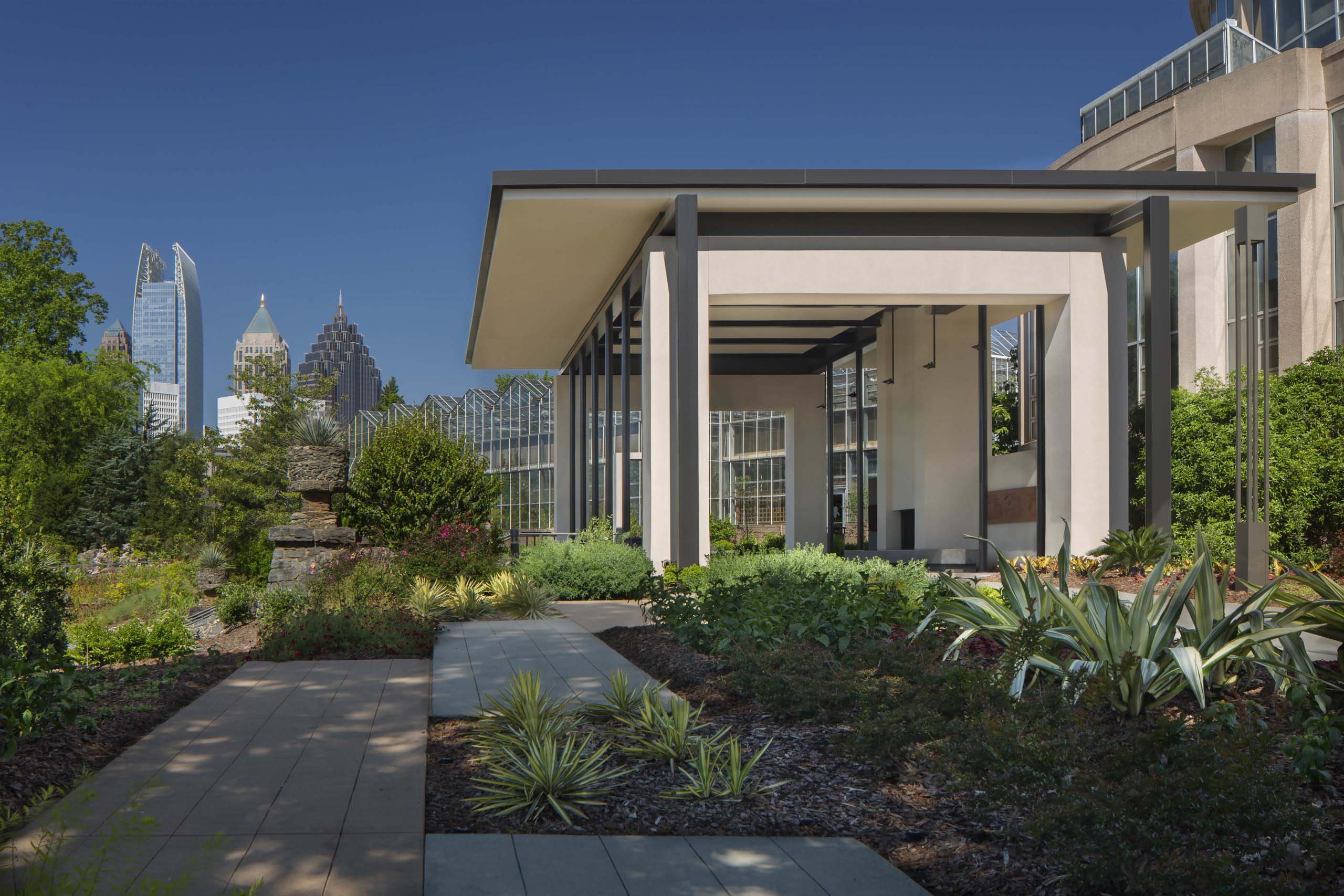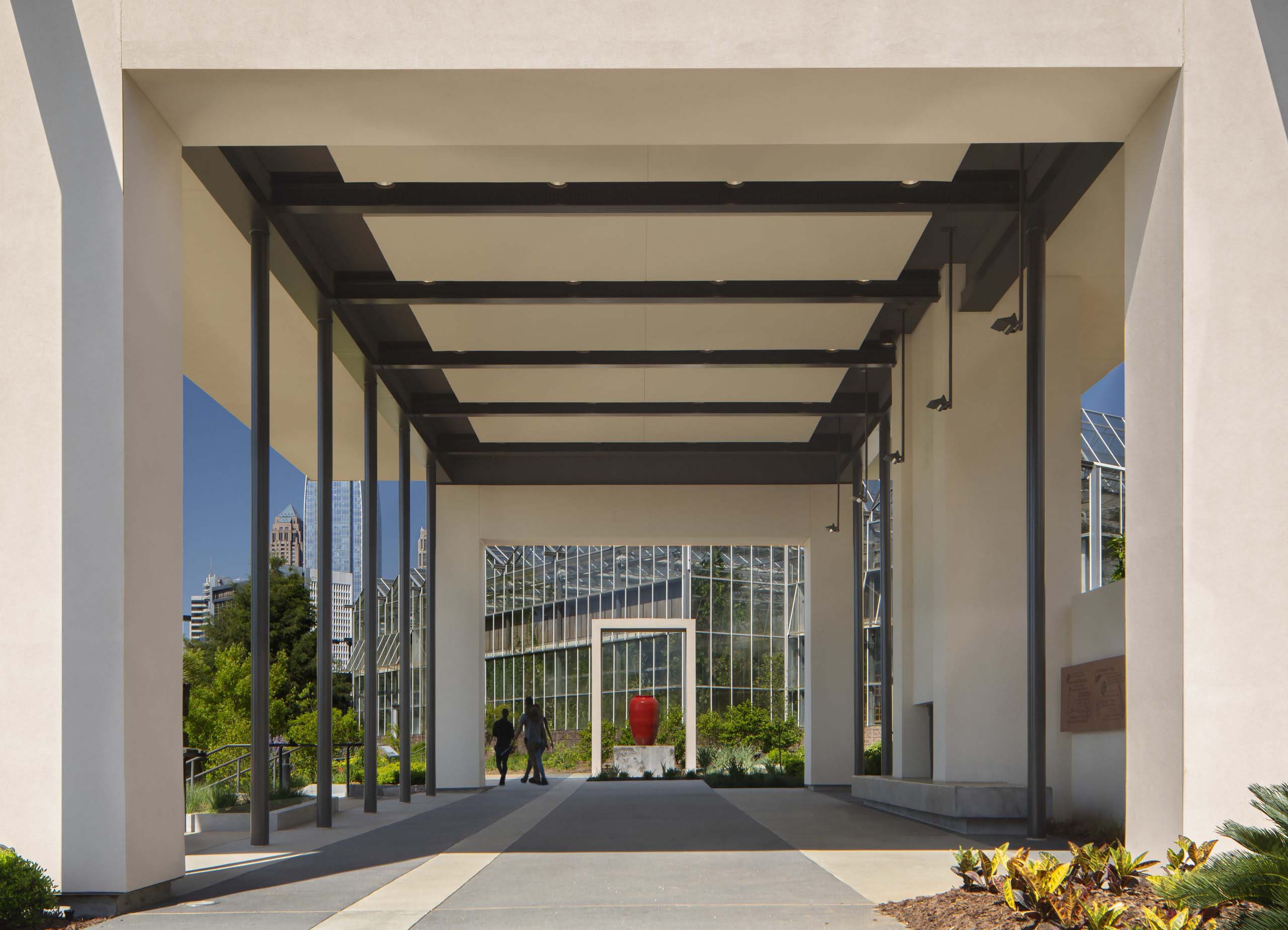0 VotesYear: 2020|Entry Categories: Built Project
Skyline Pavilion
In logical service to their mission of presenting natural settings, a public botanical garden nestled against a large city center, had generally turned away from the neighboring skyscrapers in order to focus on the natural fabric of their gardens,
As a singular exception, however, they desired an alternative venue to accommodate large gatherings that would feature both their gardens and their proximity to the urban skyline.
Adjacent to the existing greenhouse and overlooking the garden, the new Skyline Pavilion was designed to highlight this juxtaposition of nature and cityscape.
Design Challenge
Present on the site of the new pavilion are century old fragments of the 1895 Cotton States Exposition (a southern version of the 1892 Columbian Exposition in Chicago). These archeological fragments are stone plinths crowned with planters that used to flank the entry steps leading to one of the exposition buildings, long since gone. It was a challenge to incorporate these important archeological ruins in a meaningful way. Their configuration became the generator for the site plan organization, establishing the centerline and length of the pavilion and location of modern-day stairs leading down to the garden and its terraces. The new pavilion was thus proportioned to be in sync with the scale of the monumental ruins. The modern language employed in the detailing of the new pavilion contrasts with the historic ruins in a clear juxtaposition of old & new.Physical Context
The design response is all about the context – a venue for visitors to experience the cultivated garden in both sun & shade, and also a vantage point from which to view the nearby city skyline. Integral to the design of the venue is consideration season and of time of day. Facing south, the pavilion offers protective shade in the summer. A fireplace offers warmth in winter. During the day, there are views of the lush, sunny hillside gardens. At sundown as the gardens fade into shadow, the skyscrapers light up and indirect lighting softly but dramatically illuminate the pavilion, making it a welcoming space for parties, fund-raising events, concerts, and other public events.
Share This, Choose Your Platform!







